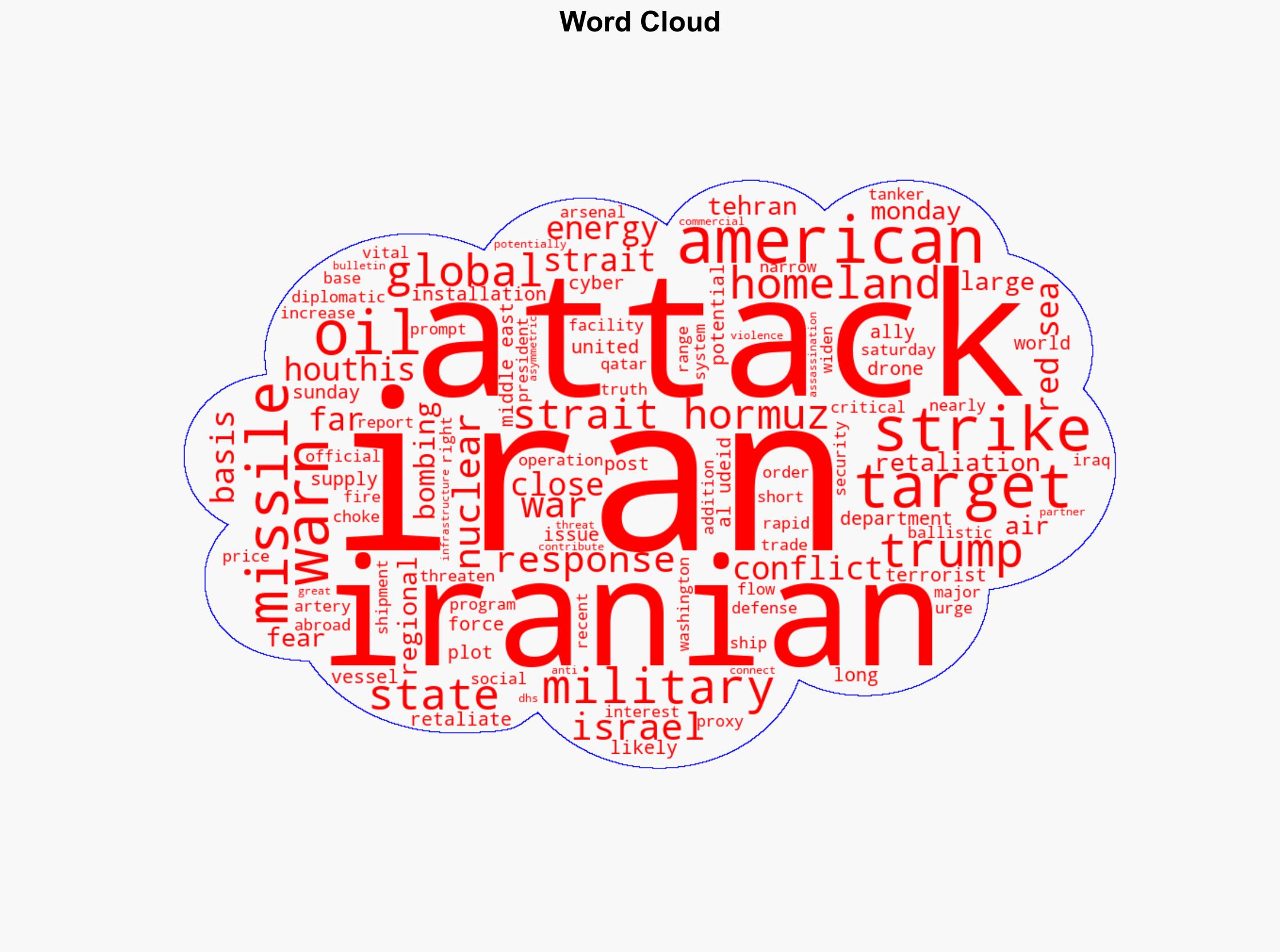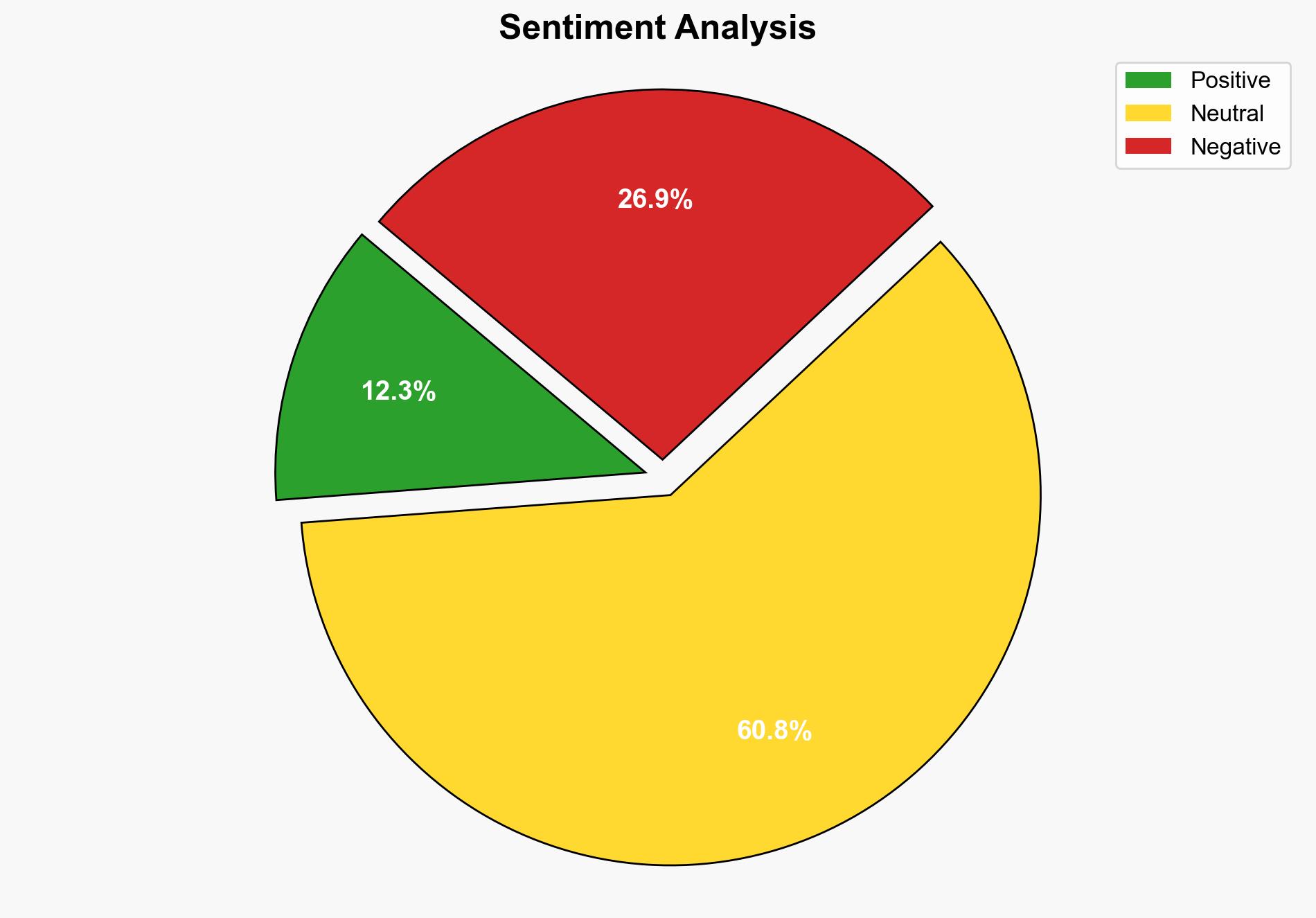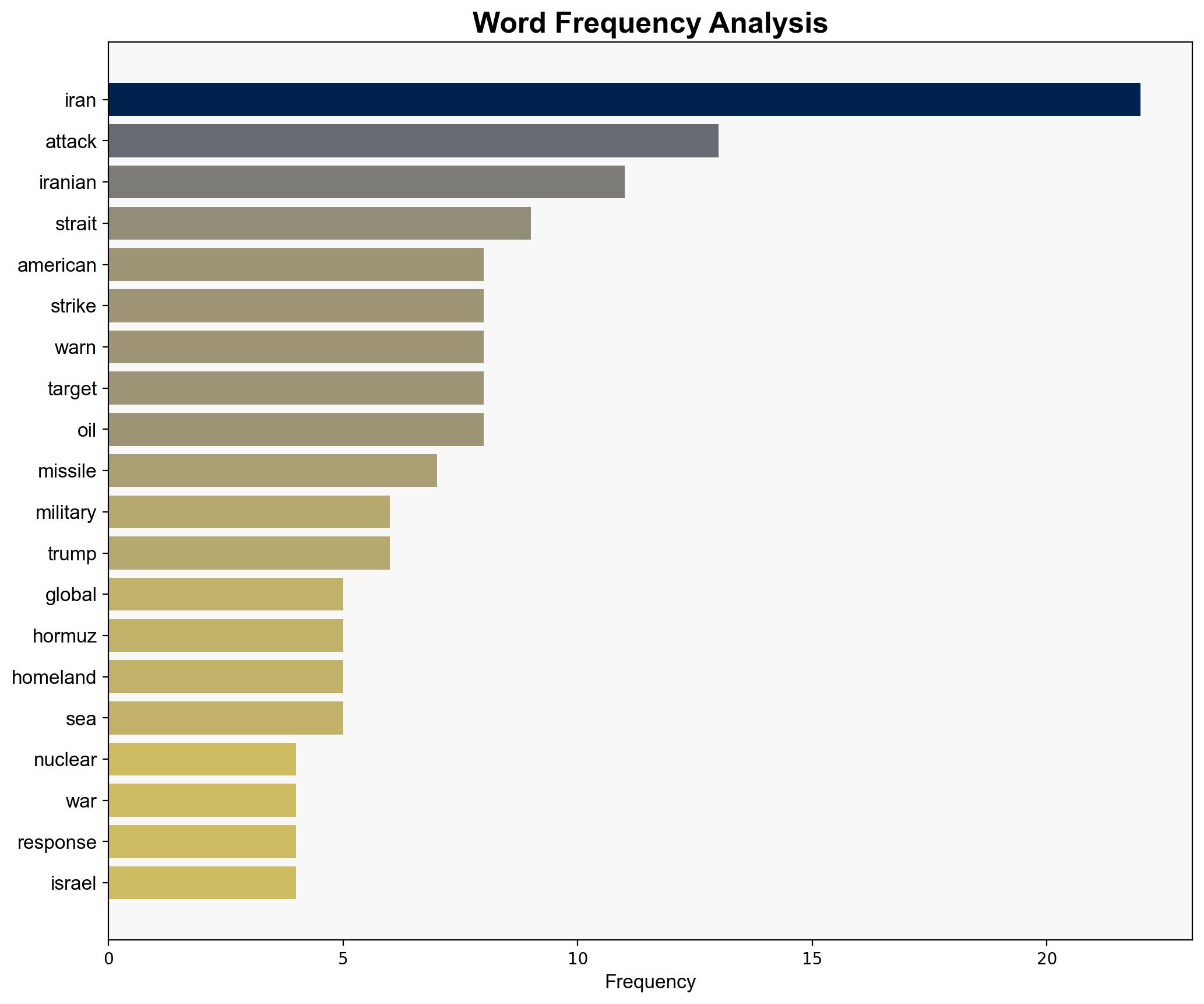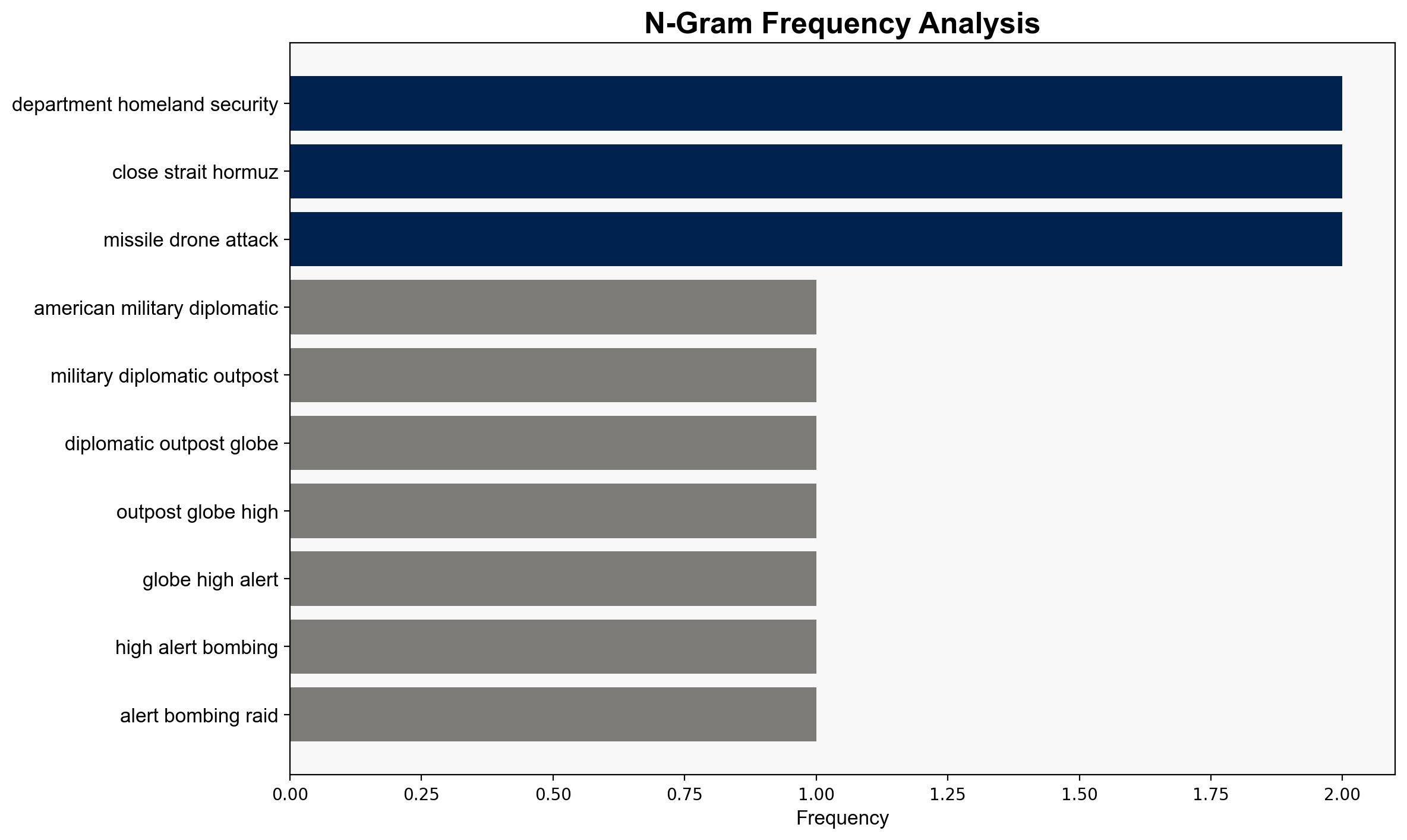Where the US Could Face More Retaliation From Iran – Time
Published on: 2025-06-23
Intelligence Report: Where the US Could Face More Retaliation From Iran – Time
1. BLUF (Bottom Line Up Front)
The recent escalation between the US and Iran, following a strike on Iran’s nuclear facility, has heightened tensions in the Middle East. Iran’s retaliatory missile strike on Al Udeid Air Base in Qatar underscores the potential for further military confrontations. Key risks include disruptions to global oil supplies via the Strait of Hormuz and increased cyber threats. Strategic recommendations focus on enhancing regional defense postures and diplomatic engagements to prevent further escalation.
2. Detailed Analysis
The following structured analytic techniques have been applied to ensure methodological consistency:
Causal Layered Analysis (CLA)
Surface events: Iran’s missile strike and threats to close the Strait of Hormuz.
Systemic structures: Military bases and energy supply routes as strategic targets.
Worldviews: Iran’s perception of sovereignty and defense.
Myths: Historical narratives of regional dominance and resistance.
Cross-Impact Simulation
The missile strike could lead to increased military engagements, impacting regional stability and global oil markets. Neighboring states may face economic pressures and security challenges.
Scenario Generation
Best case: Diplomatic resolutions ease tensions, maintaining open trade routes.
Worst case: Escalation leads to military confrontations and significant disruptions in oil supply.
Most likely: Continued low-level skirmishes with periodic diplomatic interventions.
Network Influence Mapping
Iran’s influence extends through proxy forces and alliances, affecting regional dynamics and complicating US strategic interests.
3. Implications and Strategic Risks
The potential closure of the Strait of Hormuz could severely impact global oil prices and economic stability. Cyber threats from Iran pose risks to critical infrastructure. Military engagements may trigger broader regional conflicts, affecting US and allied interests.
4. Recommendations and Outlook
- Enhance regional defense systems to counter missile threats.
- Strengthen cybersecurity measures to protect critical infrastructure.
- Engage in diplomatic efforts to maintain open trade routes and de-escalate tensions.
- Develop contingency plans for potential disruptions in oil supply.
5. Key Individuals and Entities
Donald Trump, Marco Rubio, Abbas Araghchi, Masoud Pezeshkian
6. Thematic Tags
national security threats, cybersecurity, counter-terrorism, regional focus




